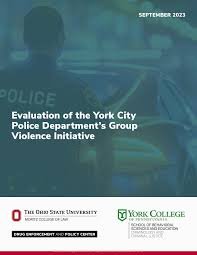By Eugenia C. South, John MacDonald, Vincent Reina,
Importance The root causes of violent crime in Black urban neighborhoods are structural, including residential racial segregation and concentrated poverty. Previous work suggests that simple and scalable place-based environmental interventions can overcome the legacies of neighborhood disinvestment and have implications for health broadly and crime specifically. Objective To assess whether structural repairs to the homes of low-income owners are associated with a reduction in nearby crime. Design, Setting, and Participants This cross-sectional study using difference-in-differences analysis included data from the City of Philadelphia Basic Systems Repair Program (BSRP) from January 1, 2006, through April 30, 2013. The unit of analysis was block faces (single street segments between 2 consecutive intersecting streets) with or without homes that received the BSRP intervention. The blocks of homes that received BSRP services were compared with the blocks of eligible homes that were still on the waiting list. Data were analyzed from December 1, 2019, to February 28, 2021. Exposures The BSRP intervention includes a grant of up to $20 000 provided to low-income owners for structural repairs to electrical, plumbing, heating, and roofing damage. Eligible homeowners must meet income guidelines, which are set by the US Department of Housing and Urban Development and vary yearly. Main Outcomes and Measures The main outcome was police-reported crime across 7 major categories of violent and nonviolent crimes (homicide, assault, burglary, theft, robbery, disorderly conduct, and public drunkenness). Results A total of 13 632 houses on 6732 block faces received the BSRP intervention. Owners of these homes had a mean (range) age of 56.5 (18-98) years, were predominantly Black (10 952 [78.6%]) or Latino (1658 [11.9%]) individuals, and had a mean monthly income of $993. These census tracts compared with those without BSRP intervention had a substantially larger Black population (49.5% vs 12.2%; |D| = 0.406) and higher unemployment rate (17.3% vs 9.3%; |D| = 0.357). The main regression analysis demonstrated that the addition to a block face of a property that received a BSRP intervention was associated with a 21.9% decrease in the expected count of total crime (incidence rate ratio [IRR], 0.78; 95% CI, 0.76-0.80; P<.001), 19.0% decrease in assault (IRR, 0.81; 95% CI, 0.79-0.84; P<.001), 22.6% decrease in robbery (IRR, 0.77; 95% CI, 0.75-0.80; P<.001), and 21.9% decrease in homicide (IRR, 0.78; 95% CI, 0.71-0.86; P<.001). When restricting the analysis to blocks with properties that had ever received a BSRP intervention, a total crime reduction of 25.4% was observed for each additional property (IRR, 0.75; 95% CI, 0.73-0.77; P<.001). A significant dose-dependent decrease in total crime was found such that the magnitude of association increased with higher numbers of homes participating in the BSRP on a block. Conclusions and Relevance This study found that the BSRP intervention was associated with a modest but significant reduction in crime. These findings suggest that intentional and targeted financial investment in structural, scalable, and sustainable place-based interventions in neighborhoods that are still experiencing the lasting consequences of structural racism and segregation is a vital step toward achieving health equity.
Pennsylvania: JAMA Network Open, 2021. 12p.





















